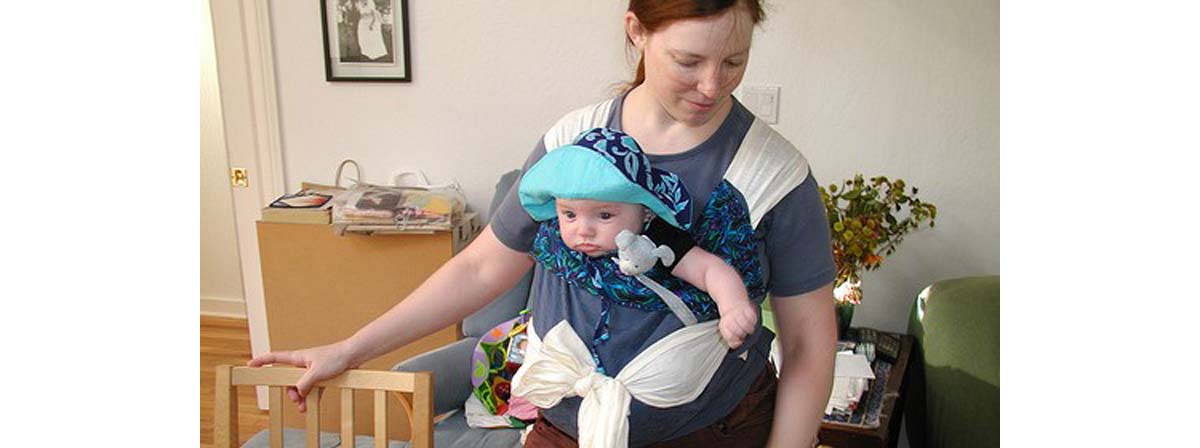Table of Contents
With so many carriers on the market, choosing which one is right for you may be tough. You may have a babywearing support group in your neighborhood, and those often let parents try out different carriers so they know the pros and cons of each. If you don't have a local babywearing group, the internet is your biggest help.

The Baby Bjorn and similar carriers made by different companies were, up until very recently, the only type of baby carrier most parents in western countries would come across. These carriers can exclusively be worn on the parent's abdomen — either facing in or out. Two shoulder straps support the whole operation, though there are various straps and buckles in different places to keep the baby secure. The Baby Bjorn is great, but it will make your shoulders hurt once your baby gets a bit bigger.
The mei tai is an Asian baby carrier consisting of a baby-sized “blanket” and four straps at its corners. These carriers are made entirely out of fabric, and the straps are used to secure the mei tai to the parent's body in a variety of ways. Mei tais often come in colorful, pretty fabrics and can comfortably be used from birth to toddlerhood.
The Ergo Baby Carrier is a popular carrier that uses the same principles as the mei tai, but with shorter straps and buckles instead of long fabric straps. Parents who want to use this carrier from birth will need to purchase an infant insert. The Ergo looks sporty and it's the only carrier my husband would wear.
A wrap is simply a very long and pretty wide piece of fabric. Wraps can be woven or stretchy and come in different lengths. Placing a baby in a wrap has a learning curve, and you can almost call it an art. Wraps can securely carry babies on your abdomen, back, and hips, and they'll even fit twins without a problem.
If you would like to try using a wrap, I'd strongly recommend using YouTube to learn about the various “carries”. Even better, find a babywearing group and get a live demonstration.
A podaegi is a traditional Korean baby carrier that consists of a very wide blanket and straps. It is used to carry babies of all ages on a parent's back. Having lived in Korea, I acquired a few of these carriers and noticed that they're designed to work very well with traditional hanbok clothes, but not so suited for the modern parent. A podaegi is unique in that it is tied around the torso and doesn't put any weight on the shoulders (but can also slip down, if you don't tie it right). They're great in the winter, but not suitable for hot weather in my experience.
Slings are carriers that are worn around one shoulder. Babies can ride in slings in various positions. The “cradle” position curls a newborn comfortably into the fabric, while older kids can simply sit in the carrier, resting on the parent's hip. You get ring slings, which are adjustable, and pouch slings, which aren't. Slings only give you one free hand. You'll still need to support your child with the other hand. They also place a lot of weight on only one shoulder. For this reason, I'm not a fan of slings — but you might be.
- Photo courtesy of Suzanne Shahar by Flickr : www.flickr.com/photos/hugabub-babywearing/8137767144/
- Photo courtesy of Anja by Flickr : www.flickr.com/photos/10506622@N06/1248804701/
- Photo courtesy of Lisa Dusseault by Flickr : www.flickr.com/photos/milele/518517328/


Your thoughts on this